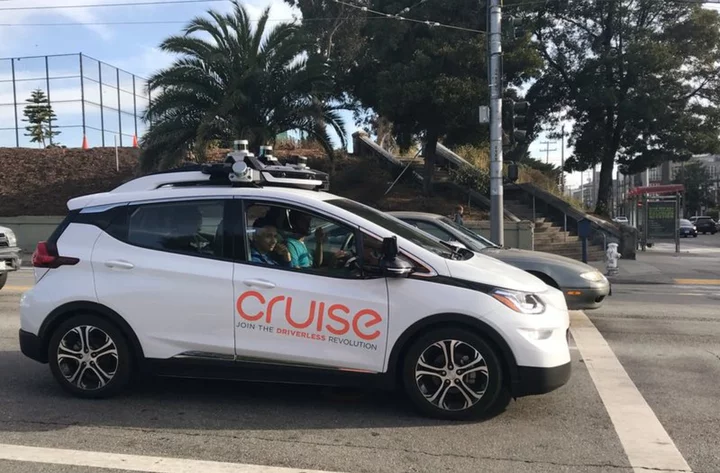By David Shepardson and Nick Carey
WASHINGTON (Reuters) -U.S. auto safety regulators on Tuesday opened a probe into whether General Motors' self-driving unit Cruise is taking sufficient precautions with its autonomous robotaxis to safeguard pedestrians.
The National Highway Traffic Safety Administration (NHTSA) said has received two reports from Cruise of incidents in which pedestrians were injured, and has identified two further incidents via videos posted to public websites.
NHTSA said the reports include Cruise autonomous vehicles "encroaching on pedestrians present in or entering roadways, including pedestrian crosswalks, in the proximity of the intended path of the vehicles."
NHTSA's preliminary evaluation covers about 594 vehicles and is the first step before the agency seek to force a recall.
"This could increase the risk of a collision with a pedestrian, which may result in severe injury or death," the agency added.
GM is spending nearly $2 billion a year on Cruise but insists the business represents a "giant growth opportunity." In June, GM CEO Mary Barra reiterated a forecast that Cruise could generate $50 billion a year in annual revenue by 2030.
A spokesperson for Cruise said the company communicates regularly with NHTSA and "has consistently cooperated with each of NHTSA's requests for information."
In December, NHTSA opened a separate safety probe into the autonomous driving system in Cruise vehicles after reports of two injuries in rear-end crashes. NHTSA said Cruise vehicles "may engage in inappropriately hard braking or become immobilized."
The probe comes just over two weeks after an incident in San Francisco in which a pedestrian was struck by a hit-and-run driver, thrown into an adjacent lane and hit a second time by a Cruise robotaxi, which was not able to stop in time.
U.S. and California officials have said they were talking to Cruise about that incident.
In August the California Department of Motor Vehicles (DMV) said it was investigating incidents involving Cruise in San Francisco, after a Cruise robotaxi was involved in a crash with an emergency vehicle.
The DMV in August said it was investigating "recent concerning incidents" involving Cruise vehicles in San Francisco and asked the company to take half its robotaxis off the roads, a request Cruise complied with.
In July, NHTSA said it would decide "in the coming weeks" on the February 2022 Cruise petition seeking permission to deploy up to 2,500 self-driving vehicles annually without human controls like steering wheels. No decision has been disclosed.
The California Public Utilities Commission (CPUC) voted in August to allow robotaxis from Cruise and Alphabet's Waymo to operate around the clock, despite strong opposition from residents and city agencies.
(Reporting by David Shepardsin in Washington, Nick Carey in London and Abinaya Vijayaraghavan in Bengaluru; Editing by Nivedita Bhattacharjee, Jan Harvey and Nick Zieminski)

